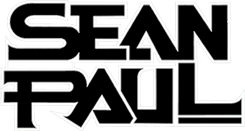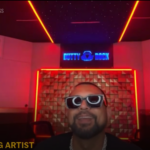From the moment anthems including “Like Glue” and “Get Busy” permeated household airwaves in the early 2000s, Sean Paul’s momentum has been unstoppable. Mainstream chart music is indebted to his bringing dancehall to the masses and the Jamaican rapper’s influence – which stretches back more than 25 years to his beginnings in Kingston – is something that he is humbly aware of.
Despite dabbling in pop with acts such as Dua Lipa and Sia – who he has teamed up with once more on new single “Dynamite” – his heart is still rooted in dancehall and he takes umbrage at the thought of the genre being scrutinised by would-be detractors. “When people have statements like the genre’s dead just because it’s not as it used to [be], I beg to differ: it’s living and thriving and surviving,” he says. “That’s why I did an album earlier this year called Live N Livin, to prove that hardcore dancehall still exists – even if it’s not sold, it’s shared.
“I’m really proud of the ladies that have been stepping up in the game,” he continues. “Spice, Koffee, Shenseea and Jada Kingdom. A couple of years ago there were only one or two big names, [such as] Lady Saw, and it was almost seen as a novelty. The females are now stepping up to have hit records and careers that are expanding and becoming something that’s bigger than just our genre.”
He adds that reggaeton, big names such as Justin Bieber, Drake and Rihanna and zessers such as Trinidad’s Prince Swanny are also indebted to dancehall. “That’s just a proud thing for me, to see women step up and see international circles embrace the music.”
GQ sat down with the singer recently to discuss some of his formative firsts…
GQ: The first time you met Sia…
Sean Paul: We’ve never met in person, which is crazy. My management asked if I would consider doing a song with Sia and at that time I’d just been musically schooled by my mum. She was like, “Sia is a great artist,” but I thought she meant [“Gangnam Style” rapper] Psy. I was arguing with her: “Psy is a great artist from South Korea. I’ve only heard one song from him,” and she was like, “No, man. Sia!” Mum introduced me to The Beatles, Cat Stevens, Abba, [but] this was a new thing for me, in my later years, to have her telling me about an artist.
The first time you realised you wanted to be an artist…
Michigan & Smiley was the first time that I heard dancehall music; they were speaking in a way that I spoke with my friends – broad patois. I saw Steely & Clevie on the TV explaining how to use computers to produce and I’d bother my mum every weekend, like, “Mum, can we go to the market? They’ve got a [Yamaha or Casio] keyboard over there.” She was freaking out, but she tried to encourage me [with piano lessons]. She bought this keyboard with a crack in it and I’d make people’s rhythms or try to re-create the dancehall songs.
At 17 or 19, I’d go to studios Cell Block 321 and Mixing Lab and I would be a fly on the wall, beating my voice or [listening to] Bounty Killer telling stories outside of the tours he’d been on. I started to figure maybe I’m not the producer, maybe I’m the artist.
What did you want to achieve when you first started in music?
I honestly just wanted to write a song that Jamaicans would throw their hands up in the air to and go “Bo!” [Laughs.] That was my dream.
The first time you performed in front of a live audience…
I had a bredren called Rupert Bent, who plays with Third World band. I went to his studio and he was like, “Why don’t you come to this open mic at this restaurant called Raphael’s?” Everyone there was pop or rock oriented and then I’d come on and people would be like, “Who’s this guy?” – it was just not my crowd. It was really nerve-racking. I sang one song for six weeks and then was like, “I really have to get more songs.”
That song was called “Ghetto Story” and it was a conscious song about the discrepancies between Uptown and Downtown in Jamaica. It was one of the first songs I wrote. Most of them early years I was very scared and I never had a full dancehall Jamaican performance – I just didn’t click that way with crowds.
The first time you realised one of your songs was blowing up…
In 1996 “Baby Girl” blew up in Jamaica. I thought, “I’ve reached the pinnacle.” The next song to do that on a different level was “Deport Them”. I released it in 1998 but it took two years for it to make the circles of the big DJs in New York. When I got there in 2000, I was doing clubs and was in the car with DJs Max Glazer and Cipha Sounds and they were freaking out.
The same week, I had a meeting with Jay-Z and Roc-A-Fella. Jay-Z showed me how much time my own record was playing against his song at that time, “Big Pimpin’”, and it was a huge song – it was getting played about 43 times a week in New York. He’s like, “Your song is being played 42 times a week. That’s never happened for a dancehall cat, like, ever.” That was a moment of clarity for me. [I realised] those numbers meant my music was having more of an impact than even some of my mentors that I looked up to.
The first thing you did when you got your first big paycheque…
I’ve never really been a big spender. The most expensive thing I’ve ever done is buy a watch that cost $100,000 (£73,000), which was nuts, and that was years after the fact of me being famous and stuff. I’ve helped a lot of people with my funds – buy cars, pay down on a house, bury their loved ones. That’s more important to me than to show them that I have a lot of money and I could drive a big car around the neighbourhood.
Source: GQ Magazine





